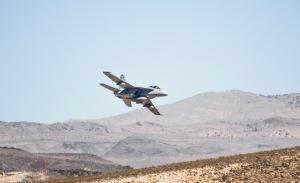Global Affairs October 22, 2023 by
Hasan Sevilir Aşan
Global polıtıcal polarızatıon and proxy wars
The world is witnessing a new cold war that is reshaping the global order and increasing the risk of a major conflict.
It should be borne in mind that the new Cold War is more complex and multidimensional. It is not only ideological and military but also economic, technological, and cultural. It involves multiple players with different agendas and impacts on every corner of the globe.

The war in Ukraine has turned International Relations“>International Relations upside down and accelerated global polarization. Meanwhile, the eternal Israeli-Palestinian conflict, triggered by the Hamas terrorist attack, has also pushed the Middle East into a fireball.
These two conflicts have sparked wider proxy wars and increased the fear of a global war.
The international community and states are almost in a rush to take their part in polarization and lay the bricks of the new Cold War.
The American Dream
The rise of China has weakened the centuries-old global hegemony of the United States and undermined the American dream. The potential danger that will open the doors of the 3rd world war will be an addition of any sensitive geographies to Ukraine and Palestine soils, such as the tickling time bomb Balkans and Taiwan waters. In this respect, while Russia wants to be one of the big players in the Balkans, the USA pokes its nose into Taiwan waters.
The leaders of the Eastern and Western world at the G7, Shanghai Cooperation Organization, NATO, BRICS, and G20 Summits made the cold war fronts more visible with their rhetorics.
G7
The seven most advanced Westerners at the G7 Hiroshima Summit in May, also known as the G7 Cold War Summit, determined the parameters of the new Cold War.
Thus, the “common front” against China, deepening of the “economic NATO,” aggravation of Russian sanctions, and inviting South Korea to the Asia-Pacific alliances with the influence of Japan were discussed and agreed upon.
Shanghai
Although the SCO claims that it is not a structure that brings together the opponents of NATO in terms of the issues and decisions it has addressed, on the contrary, it is obvious that it has taken on a role that focuses on the struggle with Western hegemony by balancing NATO, like the Warsaw Pact.
The SCO, which started as the Shanghai Five with the joint initiative of Moscow and Beijing in 1996, included Iran among its members at its latest summit in September 2023 and set a calendar for Belarus, too. Turkey has established a link with the organization, whose number of members has increased to nine, as a Dialogue Partner. This approach was considered by the Russian and Chinese strategists as a revolutionary step for the SCO and Turkey.
NATO
At the NATO Vilnius Summit, it was decided to enforce the ranks of NATO in supporting Ukraine, Turkey’s controversial approval of Sweden’s entry into the NATO umbrella following Finland.
With the initiative of the USA, China was considered a threat to NATO for the first time, and the members of the US Asia-Pacific alliances, which were formed to surround China, were also invited to the Summit.
BRICS
At the Johannesburg BRICS summit held in August, BRICS endorsed the membership of six countries in order to enlarge the organization and stand out as a stronger actor in the global system by covering wider geographies. BRICS, which comprises 40 percent of the world’s population and 30 percent of the world’s economic wealth, already has 11 members. It is said that 22 countries are in the queue for membership, and more than 40 countries have shown interest in joining.
Based on purchasing power, while the share of the G7 in the global economy is 30 percent, BRICS has 31 percent. BRICS is on its way to establishing its own financial system in order to break the global hegemony of the G7.
Turkey has also started to establish warm ties with BRICS. It is said that we are especially interested in the BRICS Investment Bank, despite the objections that this will bring up the controversy of breaking away from the West, as Brazil is also afraid of.
G20
Although the G20 is perceived as a Western formation, it is still the only forum that brings together the leaders of the East and the West. At the last summit held in New Delhi in September, which Putin and Jinping did not attend, the African Union, which represents 55 countries, was included in the G20 format as a permanent member. The outlook on the margins of the summit was the grouping of the G7, BRICS, MIKTA, ASEAN, and Africans among themselves.
Despite some common goals, the G20 summit also revealed the deep divisions and rivalries among the major powers. It was announced that an agreement on the India-Middle East-Europe Economic Transport Corridor was signed between the USA, the EU, India, and Saudi Arabia, which rivals China’s “Belt and Road” project.
BLOCS
In the face of Cold War confrontation, the parties are trying to strengthen their trenches step by step.
While the Western Front is fortifying its G7, NATO, and EU trenches with regional alliances such as AUKUS, FIVEEYES, and QUAD in the Asia Pacific, the Eastern Front is on the way to transforming into the old Warsaw Pact and COMECON formats with the Shanghai Cooperation Organization and BRICS.
The transformation of conflicts such as Ukraine and Palestine into proxy wars is the catalyst that accelerates the political atmosphere towards global Cold War polarization.